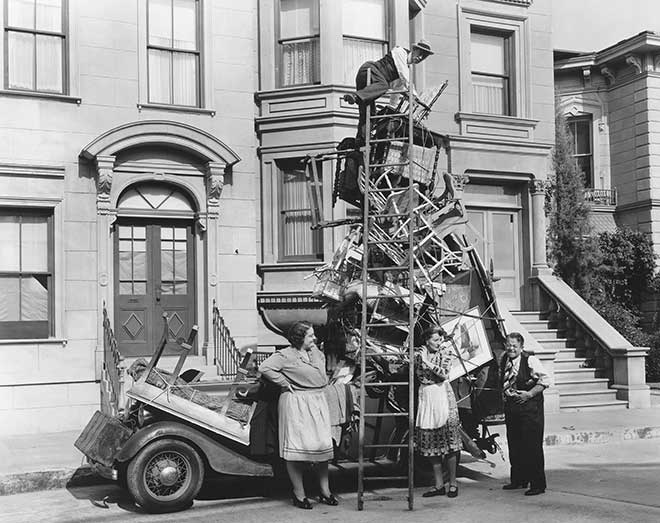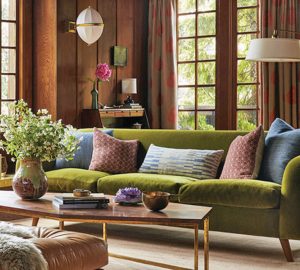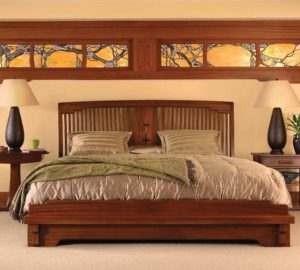trade secrets: moving
I recently completed a move from one apartment to another, and it occurred to me: there is an art to moving. The experience is right up there with death, divorce and root canals, but there are some ways to make this transition less stressful.
➻ Furniture placement is key. Take copious photos of your new home and the furniture in your present home. Prior to your move, measure your new spaces to determine which pieces you want to place in each new space. This is an opportune time to have fun and use pieces in different rooms and for different purposes. A dining room buffet can become a bedroom dresser. A dry sink from the kitchen can become an end table in the family room. Also, if it doesn’t fit, don’t force it. Just purge and get rid of Aunt Bertha’s nightstand, the one you always hated.
➻ Measure everything. Once you’ve measured your new rooms, measure your furniture and use graph paper (or a CAD program) to determine placement. Measure the width, height and depth of each piece. Remember to measure anything that could affect placement, like a window sill or ceiling height. You don’t want the back of a buffet or television blocking your view out a window or a passerby’s view in! Nothing annoys me more than seeing the back of a piece of furniture in a window.
➻ Keep in mind the future placement of your art. I recently moved a client in Palm Beach from a home with 12-foot ceilings to a condominium with 9-foot ceilings. She had some very large paintings, so furniture placement was essential in utilizing wall space for art and central space to float furniture in the room.
➻ Always transport art and precious items yourself! I don’t care who you hire, don’t trust paintings and fine porcelain to a mover. Movers mean well, but accidents happen. Avoid this if you can, and take responsibility for your finer things. I also always unpack my own things—never trust this to a mover.
➻ Hire someone to hang your art. I schedule my hanging specialist a few weeks ahead, as they do book up. I moved on Thursday and art was hung on Friday. It may seem like an extravagance, but trust me, you are exhausted from the move, so let someone else do the hanging. I always feel that it isn’t truly home until your art is up on the walls.
 timeless: paperweights
timeless: paperweights
You know by now that I am a collector. One of my growing collections is of paperweights. I received my first one in 1976 from my godmother. It commemorated the bicentennial of our great country.
Paperweights first were recognized as an art form in 1845. Venetian glassmakers showed their examples at the Industrial Exhibition in Vienna. The French actually had been working on similar designs for paperweights at the same time. The finest glass manufacturers in France—Baccarat, Clichy, Pantin and Saint Louis—began production of exquisite paperweights.
The February Revolution of 1848 in France made it no longer chic to purchase large, extravagant objets d’art, so compact paperweights became even more popular as collectibles for the wealthy. Production hit its peak in Europe in 1851, then declined for several years. Those made during the Classic period (1845-1860) are considered the most valuable. Of the 20,000 estimated to survive from this period, only about 6,000 are considered the finest.
Of course if you want a collection to catch on, the best way is to have influential people put their stamp of approval on it. Queen Victoria, Queen Mary, Empress Eugénie, Empress Carlotta, King Farouk and Argentine first lady Eva Perón all were collectors of fine paperweights. Celebrities Oscar Wilde and Truman Capote also collected. Today, it is estimated there are around 20,000 paperweight collectors!
There are a multitude of styles to collect: millefiori (Italian for ‘thousand flowers’), lampwork, sulphides, swirl, crown weight, Victorian portrait and Bohemian, to name a few.
Museums have dedicated space to fine collections left to them by patrons. The Arthur Rubloff collection is displayed at The Art Institute of Chicago, the Evangeline Bergstrom collection is at the Bergstrom-Mahler Museum of Glass in Neenah, Wisconsin, and the Corning Museum of Glass has the Amory Houghton collection on display. Collections also are at the Museum of American Glass in Millville, New Jersey, and the Currier Museum of Art in Manchester, New Hampshire.
 come to terms with: american house design
come to terms with: american house design
We often are obsessed with the interior design of our homes (for which I am grateful), but think little about their architecture and history and how each should influence the inside.
I recently visited Whitehall, the grand home built by industrialist and philanthropist Henry Flagler as a wedding gift for his third wife. Designed in 1902 by Carrère and Hastings, it is a fine example of 100,000 square feet of correct architecture. The inside reflects the grandeur of the exterior.
As my luck would have it, they were having their first-ever gift shop sale—a wonderful opportunity to add A Field Guide to American Houses by Virginia and Lee McAlester to my library. The authors make a valid point: No matter your economic situation, your interiors can reflect the home’s architectural context. From the 17th century to the postmodern, this compendium identifies everything from roof design and finish to window styles and the basic architecture of each design period.
From an interior design perspective, there was a time when a person living in a French-inspired home was inclined to choose interiors that reflected that architecture. No more. You now can visit magnificent mansions built in the Beaux Arts style that are filled with Crate and Barrel belongings! If a Bergère chair was comfortable enough for King Louis, why shouldn’t it be for a CEO?
Our Internet-savvy, disposable world no longer encourages the concept of individual design or pure architectural design. It is all about having what your friends have, leaving no room for individual personalities.
I encourage you to identify the architecture of your home and pay homage to that style indoors!








